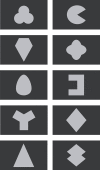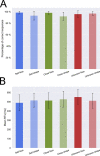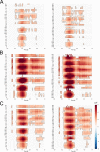The self and a close-other: differences between processing of faces and newly acquired information
- PMID: 35595543
- PMCID: PMC9977391
- DOI: 10.1093/cercor/bhac201
The self and a close-other: differences between processing of faces and newly acquired information
Abstract
Prioritization of self-related information (e.g. self-face) may be driven by its extreme familiarity. Nevertheless, the findings of numerous behavioral studies reported a self-preference for initially unfamiliar information, arbitrarily associated with the self. In the current study, we investigated the neural underpinnings of extremely familiar stimuli (self-face, close-other's face) and stimuli newly assigned to one's own person and to a close-other (abstract shapes). Control conditions consisted of unknown faces and unknown abstract shapes. Reaction times (RTs) to the self-face were shorter than to close-other's and unknown faces, whereas no RTs differences were observed for shapes. P3 amplitude to the self-face was larger than to close-other's and unknown faces. Nonparametric cluster-based permutation tests showed significant clusters for the self-face vs. other (close-other's, unknown) faces. However, in the case of shapes P3 amplitudes to the self-assigned shape and to the shape assigned to a close-other were similar, and both were larger than P3 to unknown shapes. No cluster was detected for the self-assigned shape when compared with the shape assigned to the close-other. Thus, our findings revealed preferential attentional processing of the self-face and the similar allocation of attentional resources to shapes assigned to the self and a close-other.
Keywords: ERP; attention; familiarity; saliency; self-preference.
© The Author(s) 2022. Published by Oxford University Press.
Figures







References
-
- Alexopoulos T, Muller D, Ric F, Marendaz C. I, me, mine: automatic attentional capture by self-related stimuli. Eur J Soc Psychol. 2012:42:770–779.
-
- Aston-Jones G, Cohen JD. An integrative theory of locus coeruleus-norepinephrine function: Adaptive gain and optimal performance. Annu Rev Neurosci. 2005:28:403–450. - PubMed
Publication types
MeSH terms
LinkOut - more resources
Full Text Sources

